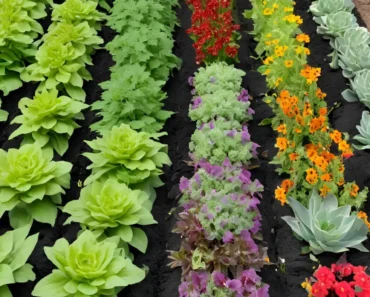Master the Art of Pan Cooking for Better Health, Flavor, and Culinary Success
The decision to use a pan transforms cooking from a mundane task into a culinary adventure that delivers superior flavor, nutrition, and control over your food. Whether you’re searing a perfect steak, sautéing fresh vegetables, or creating a delicate sauce, understanding when and why to use a pan elevates your cooking skills and delivers consistently better results than other cooking methods.
This comprehensive guide explores the science behind pan cooking, reveals the health benefits you gain, and provides practical techniques that professional chefs use daily. You’ll discover how different pan materials affect your food, learn essential cooking techniques, and understand why millions of home cooks choose pans as their primary cooking tool.
The Science Behind Using a Pan for Optimal Cooking
Pan cooking delivers superior results through precise heat control and direct contact between food and cooking surface. This method creates the Maillard reaction, which develops complex flavors and appealing textures that other cooking methods cannot achieve.
Heat Distribution and Temperature Control
A quality pan distributes heat evenly across its surface, creating consistent cooking temperatures that prevent hot spots and uneven results. This uniform heat distribution allows you to control cooking speed and achieve precise doneness levels for different ingredients.
The direct contact between food and pan surface enables rapid heat transfer, which is essential for techniques like searing and browning. Pan-frying is an effective way to add rich, caramelized flavor to the food you cook, as well as retain its moisture and tenderness, making it superior to indirect cooking methods for many applications.
Flavor Development Through Caramelization
Pan cooking creates caramelization and browning reactions that develop complex flavors impossible to achieve through boiling or steaming. These chemical reactions occur at specific temperatures that pans can maintain consistently.
The fond (brown bits) that develops on pan surfaces during cooking becomes the foundation for rich sauces and gravies. This flavor concentration technique transforms simple ingredients into restaurant-quality dishes through proper pan usage.
Moisture Control and Texture Creation
Pan cooking allows precise moisture control through evaporation management. You can create crispy exteriors while maintaining tender interiors, or preserve moisture for delicate ingredients that require gentle cooking.
The ability to adjust cooking liquid levels during pan cooking enables texture customization that other methods cannot provide. This control makes pans essential for creating professional-quality dishes at home.
Health Benefits of Choosing to Use a Pan
Pan cooking offers significant health advantages over other cooking methods by preserving nutrients, reducing harmful compounds, and providing better control over cooking fats and ingredients.
Nutrient Retention and Preservation
Pan cooking preserves more nutrients than boiling or other water-based cooking methods. Overcooking, especially boiling, can lead to significant nutrient loss, particularly water-soluble vitamins like vitamin C and some B vitamins. Use steaming, microwaving or sautéing for minimal nutrient loss.
The shorter cooking times required for pan methods help preserve heat-sensitive vitamins and minerals. Quick sautéing maintains vegetable crispness and nutritional density better than prolonged cooking methods.
Control Over Cooking Fats
Pan cooking allows precise control over oil and fat usage, enabling healthier cooking choices. You can use minimal amounts of healthy fats like olive oil or completely avoid added fats with non-stick surfaces.
The ability to drain excess fats during cooking makes pan methods healthier than deep frying while still achieving satisfying textures and flavors. This control supports heart-healthy cooking practices.
Reduced Formation of Harmful Compounds
Proper pan cooking at appropriate temperatures reduces the formation of harmful compounds that can develop during high-heat cooking. Temperature control prevents burning and charring that creates potentially carcinogenic substances.
Use cast iron for high-heat cooking like searing steaks, making pancakes, or roasting vegetables. Once well seasoned, it becomes nonstick, so no need to worry about harmful nonstick coatings, making it one of the healthiest material choices for pan cooking.
Essential Pan Types and When to Use Each
Different pan materials and designs serve specific cooking purposes, and understanding these differences helps you choose the right pan for optimal results in various cooking situations.
Stainless Steel Pans for Versatile Cooking
Stainless steel pans are a popular choice among cooks due to their durability and resistance to scratches and corrosion. They are also non-reactive, meaning they won’t transfer metallic flavors to food.
Stainless steel pans excel at browning proteins, deglazing for sauces, and high-heat cooking techniques. Their durability makes them suitable for metal utensils and dishwasher cleaning, providing long-term value for serious cooks.
Non-Stick Pans for Delicate Foods
Non-stick pans provide easy food release and simplified cleanup, making them ideal for eggs, fish, and other delicate ingredients that tend to stick to traditional surfaces.
Modern ceramic non-stick coatings offer safer alternatives to traditional chemical coatings. Ceramic pans are free from harmful chemicals like PFOA, PTFE, and cadmium, making them a safer option for health-conscious cooks.
Cast Iron Pans for High-Heat Applications
Cast iron pans provide superior heat retention and distribution, making them perfect for searing, browning, and transitioning from stovetop to oven. Their naturally developing non-stick properties improve with proper seasoning and use.
The iron content in cast iron pans can actually increase the iron content of food, providing nutritional benefits along with excellent cooking performance. This makes cast iron an excellent choice for those concerned about iron deficiency.
Copper Pans for Professional Results
Copper pans offer the most precise temperature control due to their exceptional heat conductivity. They respond quickly to temperature changes, making them ideal for delicate sauces and temperature-sensitive cooking techniques.
Professional chefs prefer copper for its superior heat distribution and aesthetic appeal, though these pans require more maintenance and investment than other materials.
Master Pan Cooking Techniques for Better Results
Proper pan techniques separate amateur cooking from professional results. These fundamental skills help you achieve consistent, restaurant-quality dishes using basic pan cooking methods.
Searing for Perfect Protein Preparation
Searing creates a flavorful crust while sealing in juices, making it essential for steaks, chops, and chicken breasts. Proper searing requires high heat, minimal movement, and patience for optimal results.
The key to successful searing is achieving proper pan temperature before adding food. A properly heated pan creates immediate sizzling and prevents sticking, while insufficient heat causes steaming and poor texture development.
Sautéing for Quick Vegetable Cooking
Sautéing involves cooking food quickly in a small amount of fat over high heat while constantly moving ingredients. This technique preserves vegetable color, texture, and nutritional content while developing complex flavors.
Successful sautéing requires proper ingredient preparation, appropriate pan size, and continuous movement to ensure even cooking. The technique works best with uniformly cut ingredients that cook at similar rates.
Deglazing for Sauce Development
Deglazing involves adding liquid to dissolve the fond (browned bits) left after searing or sautéing. This technique creates the foundation for pan sauces that complement the cooked food perfectly.
Wine, stock, or even water can be used for deglazing, depending on the desired flavor profile. The dissolved fond provides rich, concentrated flavors that cannot be replicated through other cooking methods.
Pan-Roasting for Complete Cooking
Pan-roasting combines stovetop searing with oven finishing, providing perfectly cooked proteins with excellent texture contrast. This technique works especially well for thick cuts of meat and whole fish.
Starting on the stovetop develops color and flavor, while finishing in the oven ensures even cooking throughout. Oven-safe pans are essential for this technique, making material choice important for pan-roasting success.
Key Takeaways:
- ✓
Pan cooking provides superior flavor development through caramelization and browning reactions - ✓
Health benefits include better nutrient retention and control over cooking fats - ✓
Different pan materials serve specific purposes for optimal cooking results - ✓
Master techniques like searing and sautéing create professional-quality dishes - ✓
Proper pan selection and technique improve both flavor and nutritional outcomes
Common Mistakes When Using Pans and How to Avoid Them
Understanding common pan cooking mistakes helps you avoid disappointing results and develop consistent cooking skills. These errors often stem from incorrect temperature management and improper technique application.
Overcrowding the Pan Surface
Overcrowding prevents proper heat circulation and causes steaming instead of browning. Food releases moisture that cannot evaporate quickly, resulting in soggy textures and poor flavor development.
Cook in batches when preparing large quantities, allowing adequate space between food pieces for proper heat transfer and moisture evaporation. This practice ensures consistent results across all portions.
Incorrect Temperature Selection
Using inappropriate heat levels causes either burning or insufficient cooking. High heat works well for searing, while medium heat suits most sautéing tasks, and low heat prevents delicate sauces from breaking.
Learn to recognize visual and auditory cues that indicate proper pan temperature. Oil shimmer, water drop behavior, and sizzling sounds provide reliable temperature indicators for different cooking techniques.
Premature Food Movement
Moving food too soon prevents proper browning and can cause sticking. Allow proteins to develop a crust before attempting to flip or move them in the pan.
Food naturally releases from the pan surface when properly seared. Forcing movement before this natural release occurs results in torn surfaces and lost flavors.
Inadequate Pan Preparation
Insufficient preheating and improper seasoning lead to sticking and uneven cooking. Allow pans to reach appropriate temperature before adding oil or food for best results.
Clean, properly seasoned pans perform better and last longer. Regular maintenance prevents buildup that interferes with heat transfer and food release.
Selecting the Right Pan for Your Cooking Style
Choosing appropriate pans for your cooking preferences and skill level ensures better results and more enjoyable cooking experiences. Consider your most frequent cooking tasks when making pan selections.
Assessment of Your Cooking Needs
Evaluate the types of food you cook most frequently and the techniques you use most often. Protein-focused cooks benefit from stainless steel or cast iron, while those who prepare delicate foods might prefer non-stick options.
Consider your maintenance preferences and cooking frequency when selecting pan materials. High-maintenance materials like copper require dedication but offer superior performance for serious cooks.
Budget Considerations and Long-Term Value
Quality pans represent long-term investments that improve cooking results and last for decades with proper care. Consider cost-per-use rather than initial purchase price when evaluating pan options.
Start with one high-quality pan in a versatile size rather than purchasing multiple lower-quality options. A 10-12 inch stainless steel or cast iron pan handles most cooking tasks effectively.
Size and Shape Considerations
Pan size affects cooking performance and portion capacity. Larger pans provide more cooking surface but require more storage space, while smaller pans heat faster but limit batch sizes.
Shape considerations include straight versus sloped sides, handle design, and pour spouts. These features affect usability and determine which cooking techniques work best with each pan.
Care and Maintenance for Pan Longevity
Proper pan care extends lifespan, maintains cooking performance, and protects your investment. Different materials require specific maintenance approaches for optimal results.
Cleaning Techniques for Different Materials
Stainless steel pans tolerate aggressive cleaning and dishwasher use, while non-stick surfaces require gentle handling and hand washing. Cast iron needs immediate drying and oil application to prevent rust.
Remove stuck food with appropriate tools and techniques for each material. Deglazing hot pans with water often loosens stubborn residue without damaging pan surfaces.
Storage and Organization
Proper storage prevents damage and maintains pan condition. Stack pans with protective padding between surfaces, or hang them to prevent scratching and maintain accessibility.
Organize pans by frequency of use and cooking tasks. Keep most-used pans easily accessible while storing specialty items in less convenient locations.
Seasoning and Surface Maintenance
Cast iron and carbon steel pans require regular seasoning to maintain non-stick properties and prevent rust. Apply thin oil layers and heat treatment to build protective coatings.
Monitor non-stick coatings for wear and replace pans when coatings become damaged. Damaged non-stick surfaces compromise cooking performance and may pose health concerns.
Advanced Pan Techniques for Culinary Excellence
Professional cooking techniques elevate home cooking results and expand your culinary capabilities. These advanced methods require practice but deliver restaurant-quality results.
Temperature Control Mastery
Learn to maintain consistent temperatures through burner adjustment and pan position changes. Professional cooks constantly adjust heat levels throughout cooking processes to achieve optimal results.
Use multiple burners or oven transitions to manage different cooking stages. This technique allows complex preparations that require varying temperature profiles.
Emulsification and Sauce Techniques
Master butter mounting, cream reduction, and other sauce techniques that create professional-quality accompaniments. These skills transform simple pan cooking into elegant dining experiences.
Practice whisking techniques and temperature control that prevent sauce breaking. Successful sauce work requires patience and attention to temperature and timing cues.
Flavor Layering and Development
Build complex flavors through sequential ingredient additions and technique combinations. Start with aromatic bases, add proteins for browning, then incorporate liquids and finishing touches.
Understand how different ingredients contribute flavors at various cooking stages. Garlic added early provides different flavors than garlic added at the end of cooking.
Frequently Asked Questions
What makes pan cooking healthier than other cooking methods?
Pan cooking preserves more nutrients than boiling while allowing precise control over cooking fats and temperatures. The shorter cooking times maintain vitamin content, and you can use minimal healthy oils instead of deep frying. Pan cooking also prevents the formation of harmful compounds that occur with improper high-heat cooking, making it one of the healthiest cooking methods available.
Which pan material should beginners start with?
Beginners should start with a high-quality stainless steel pan in a 10-12 inch size. Stainless steel offers versatility, durability, and works with all cooking techniques while being relatively forgiving for learning proper pan cooking skills. It’s dishwasher safe, handles metal utensils, and provides excellent browning capabilities essential for developing foundational cooking skills.
How do I know when my pan is properly heated?
A properly heated pan shows several indicators: oil shimmers but doesn’t smoke, a drop of water sizzles and evaporates quickly, and food makes immediate sizzling sounds when added. For non-stick pans, you can test by sprinkling a few drops of water – they should dance and evaporate within 2-3 seconds. Never heat empty non-stick pans beyond medium heat to preserve the coating.
Why does my food stick to stainless steel pans?
Food sticks to stainless steel when the pan isn’t properly heated or when you move food too early. Ensure your pan reaches proper temperature before adding oil, then allow proteins to develop a crust before attempting to flip them. Food naturally releases when properly seared. Also, avoid using too little oil or fat, which can cause sticking even at correct temperatures.
Can I use metal utensils with all pan types?
Metal utensils work safely with stainless steel, cast iron, and carbon steel pans but should be avoided with non-stick and ceramic-coated surfaces. Use wooden, silicone, or plastic utensils with coated pans to prevent scratching and coating damage. Even with metal-safe pans, use appropriate pressure to avoid scratching polished surfaces unnecessarily.
Final Thoughts
Choosing to use a pan for your cooking transforms both the process and results of your culinary efforts. The superior heat control, flavor development, and nutritional benefits make pans essential tools for anyone serious about cooking. Whether you’re searing proteins, sautéing vegetables, or creating complex sauces, pan cooking provides the foundation for professional-quality results at home. Expert guidance on cookware selection can help you make informed choices, while professional cooking techniques will elevate your skills. Invest in quality pans, master fundamental techniques, and enjoy the superior flavors and textures that only proper pan cooking can deliver.


